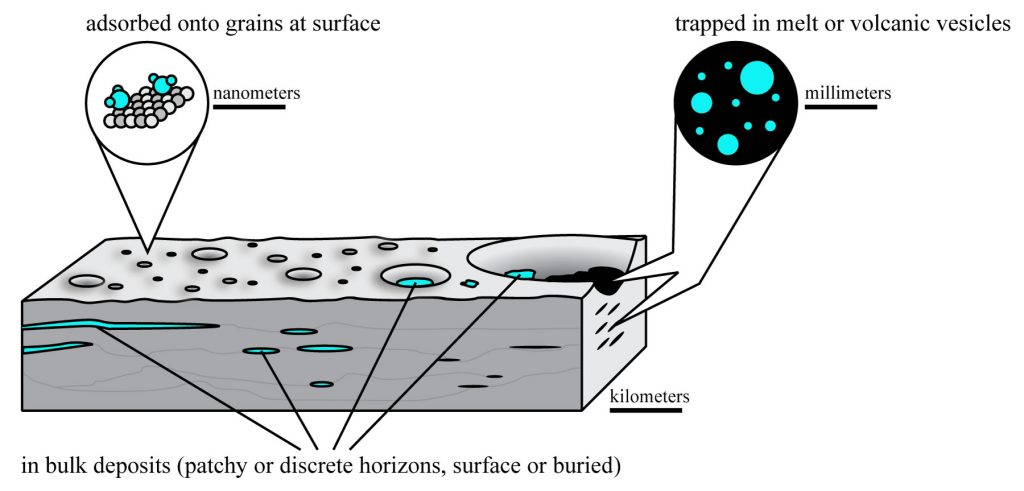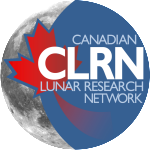Volatiles, and the quest to collect samples and return them to Earth for detailed analyses, have driven a substantial amount of technologies innovation and concept studies for the past decade. The Canadian Space Agency, and other space agencies such as NASA and the European Space Agency, list lunar volatiles as a high priority target because their usefulness to produce fuel for rocket launches, and water and air for astronauts. Canada’s involvement in upcoming missions to search for volatiles, mainly water-ice particles, on the lunar surface includes developing software and artificial intelligence capable of surveying the lunar surface and isolating areas where large concentrations of water-ice is prominent.
What are Lunar Volatiles?
Volatiles are chemical elements/compounds that typically vapourize when exposed to air and other surface environments. Examples of volatiles include hydrogen (H), water (H₂O), helium (He), carbon dioxide (CO₂), and carbon monoxide (CO). When exposed to increasing temperatures, these volatiles will convert to a gas rapidly, making them challenging to handle in laboratories, let alone the surface of planetary bodies. Although volatiles pose difficulties when it comes to studying and sampling, they will play a vital role in the sustainable presence of humans on the lunar surface, because volatiles hydrogen and water can used as a fuel source, breathable air, and a source of drinking water.
Previous work studying volatiles on the Moon have focused on the use of remote sensing data acquired by numerous spacecrafts. In particular, the neutron spectrometer instrument on the NASA Lunar Prospector spacecraft detected enriched areas of hydrogen in both the north and south lunar poles.

Canada’s role in the search for and extraction of lunar volatiles incorporates the development of artificial intelligence (AI) and remote sensing techniques capable of measuring the composition of water-ice. At Mission Control Space Services (MCSS), a software developer for mission development and operations based in Ottawa, a team has developed and continuing to test an advanced AI software that is capable of measuring thermal infrared emissions at specific wavelengths (2.9-100 µm) to map lunar surface temperatures and characteristic lunar ice volatiles. There advanced AI, known as the Intelligent Sensing and Perception in Infrared (I-SPI), will soon be utilized by micro-rovers on the Moon to navigate areas in the lunar pole regions with poor lighting conditions, areas where water-ice deposits would be stable on and near the surface. MCSS is working with the Institut National d’Optique (INO) (Canada’s largest centre of expertise in optics and photonics), a core science team comprising Dr. Ed Cloutis (University of Winnipeg), Dr. Mike Daly (York University) and Dr. Chris Skonieczny (Concordia University), and an extended science team comprising Dr. Ryan Ewing (Texas A&M University) and Dr. Louisa Preston (Natural History Museum, London, UK).

